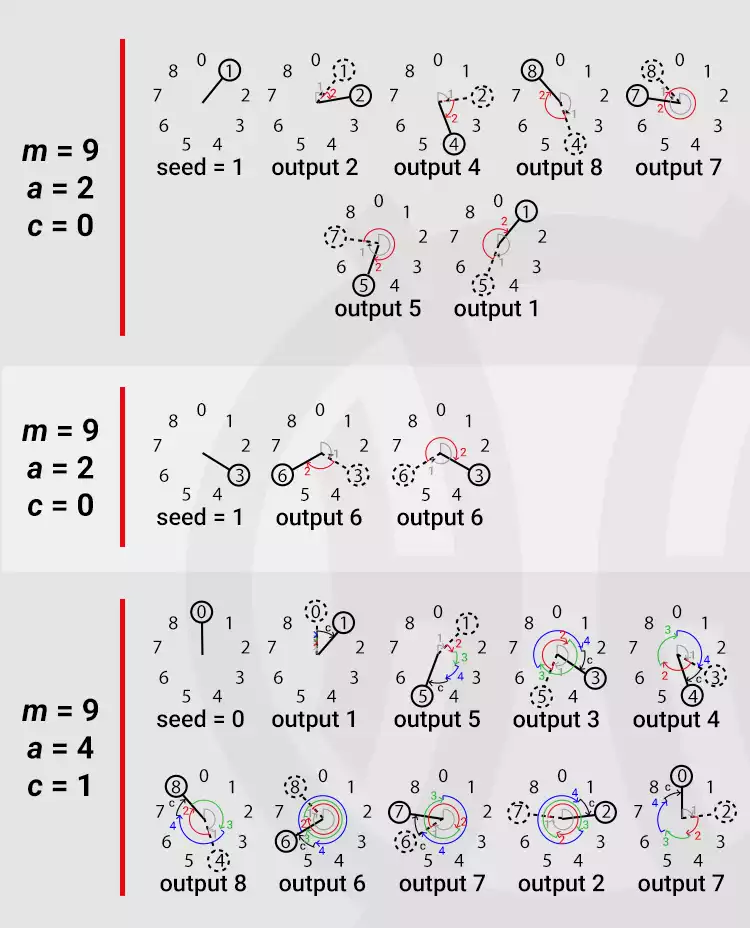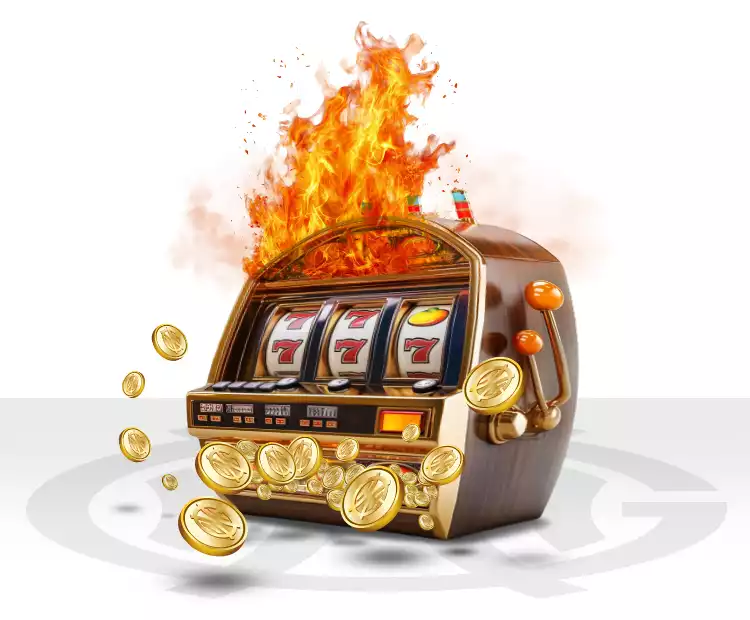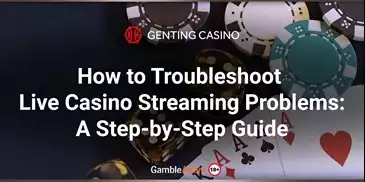Slot machines and other electronic gambling machines (EGMs) became over the last three decades the most popular form of gambling. They also attracted a lot of myths and misconceptions, which are tightly related to the problematic gambling behavior that their players might develop. Problem gambling associated with these games partly develops because of a lack of information or accurate information on how the machines work and partly due to the inner design of the machines.
Thus, it is not surprising that the EGMs became the object of investigation for researchers in various disciplines connected with the field of problem gambling – psychologists, mathematicians, engineers, economists, and even philosophers.
At the beginning of the 2000s, a research stream focused on the structural characteristics of slot games and other EGM games gained momentum. The results of these studies came to be connected to various causes and paths of development of problem gambling and came to ground the programs of awareness and prevention.
In 2004, two problem gambling researchers – Nigel Turner (psychologist at the Centre for Addiction and Mental Health, Canada) and Roger Hobay (gambling expert and therapist) – published in the Journal of Gambling Issues (the world’s first and longest-running academic journal dedicated to understanding problem gambling) a wide-scope study dedicated to the relationship between the inner design of the EGMs, the myths associated with them, and the risk factors of problem gambling.
The main virtue of their paper is that it is also a practical resource for the (problem) gambling counselors and the general public, where the slot machines were for the first time demystified and exposed in their inner design. Although the EGMs evolved technologically since this paper was published, their essentials remained as described in the Turner and Hobay’s paper, which still stands as the reference work for further research on this topic and an insightful guide for players.
The basic principles of slot machines and other EGMs
The following categories of games were included in the EGMs: slot machines, video slots, video poker, and video lottery machines.
The EGMs have become the most profitable form of gambling from the operators’ perspective, and the main reasons for that is their spread (including outside casinos) and their low cost (as low-stakes betting) compared to classical casino games such as roulette or blackjack.
For the most part of the EGMs, very little accurate information is available from the gambling industry, if not available at all. The secrecy on the inner design of the slot machines from their producers is well known and still unjustified.
Under these conditions, it is difficult for the players to find objective information about the games they play, and to distinguish between accurate and inaccurate information. In the absence of objective relevant information, people tend to create their own beliefs about how such machines work. When these beliefs are shared and published on the internet, they become myths and are further taken as facts.
Slot machines and video slots
The first thing to know about slot machines is that there is very little relationship between the number of symbols on the reel (either physical or virtual) and the probability of a certain symbol landing on the payline. The second is that the payout of the machine is determined by the mathematical design of the game – which involves both the symbol weighting of the reels and the payout schedule – and not by how recently the machine has paid out.
The structural characteristics of the slot games (including their mathematical design) are very complex and the odds of winning are hidden from the player. More precisely, not knowing the parametric configuration of the game prevents one from computing these odds.
Slot is a game of pure luck and no strategic skills are applicable in such games.

Video poker
Video poker is different from slots in many respects, although its slots can be seen like reels holding symbols (as cards).
Unlike slots, in video poker the probabilities of achieving the various outcomes as card configurations are actually computable, as the game is based on a simulated deck of cards. There is also an element of skill in the option to choose which cards to hold, as you can compare the probabilities of the most probable outcomes, while taking into account their payout rates. Thus, players who study the game and make probability-based decisions can improve their results; however such skill does not usually allow players to overcome the house edge of the game.
Video lottery machines
In most jurisdictions, video lottery machines are actually multi-game platforms offering slot games, video poker, and sometimes other games such as blackjack or keno. In some jurisdictions, the outcome of the games on a video lottery machine is determined by a central system rather than the individual machine, as it is the case with stand-alone slot machines.
Slot games and video poker played on a video lottery machine are largely the same as those games played on a stand-alone machine. As we saw, one is a game of pure luck and the other partially a game of skill. Therefore, when discussing machine gambling with a client, it is important to consider the type of game played. For instance, telling a player who only plays video poker on a video lottery machine that the game involves no skill could interfere with therapy or counseling by undermining the credibility of the counselor.
Myths, erroneous beliefs, and the limits of human reasoning
Studies confirmed that the EGMs are the most frequently misunderstood form of gambling. This misunderstanding, which also relates to the absence of accurate information about how such machines work, manifests under the general premise that most people have a very poor understanding of the nature of randomness, probability, independence of events, and measuring chances. Such misunderstanding results in people holding various naïve theories and beliefs about chance and their ability to win in gambling. The so-called Gambler’s Fallacy is just one of such misconceptions and fallacies associated with gambling.
It was found that problem gamblers tend to have more erroneous beliefs than non-problem gamblers. It is a fact that many of the features of the EGMs are poorly understood or unknown by problem gamblers, at-risk players, and also treatment providers. Hence it is essential to understand how the machines work in order to set up objective effective treatment and prevention programs.
Randomness and random number generators
A machine cannot be random technically, as all the physical events driving its functioning, including those determining its outcome, are deterministic (caused by something). However, we cannot measure anything precisely, which makes in turn any outcome essentially random. This imprecision submits to the general principle that the combination of complexity and uncertainty produces chaos, which is the basis for randomness.
On the other hand, slot machines or any other EGM are computers, which are inherently complex, but not certain. They use a random number generator (RNG) to create an erratic sequence of numbers to determine the outcome of a game. Thus, in order to know how a slot machine works at its core and demystify its myths, it is important first to have knowledge about the RNG.

The Lehmer's Linear Congruential Iteration algorithm that yields sequence of pseudo-randomized numbers
How RNG works in slots
The role of the RNG is to create unpredictable, uniform, and independent outcomes for the machine. All these three qualities are necessary for a RNG to be declared fair and effective, and they can be provided by certain mathematical properties of the algorithm standing behind the RNG software.
The first RNGs in slots used Lehmer’s linear congruential iteration (which is still used in present days), but more and more sophisticated algorithms were developed for the RNGs over time. The RNG algorithm starts with a seed as initial input, for instance the time of the day. The arithmetic formula of the algorithm (expressing a remainder in the linear congruential iteration) generates a first number when the variable takes the value of the seed. Then, the obtained number is used as the seed for the next number and so on. The parameters of the formula are chosen to produce a number in a useful range. For instance, between 1 and 36, for a reel of a slot machine with 36 stops. The RNG works for each reel independently and generates the outcome combination on the payline as a combination of stops. The symbols showing on those stops determine the actual outcome, which may or not be winning.
Random versus pseudorandom
The numbers produced by the RNG are not truly random, just because no algorithm can reproduce randomness and the number is predictable (computable), as long as we know the seed. This is why they are called pseudorandom numbers (and the generator is called pseudorandom number generator – PRNG). However, the numbers generated by the PRNG are difficult to distinguish from truly random numbers and moreover its algorithm can run at a high speed, generating thousands of random numbers per second. This means that the computerized RNGs are good enough for the practical purpose of generating the outcome of a game of chance.
The random versus pseudorandom comparison reverts to the more general principle that a machine cannot create true uncertainty, but only complexity (in the form of an “algorithmic randomness”). The PRNG always follows the same algorithm and the pseudorandom numbers go through the same cycle. If the modulus (in the linear congruential algorithm) is a prime number around four billion, the cycle will not repeat itself until it has run through about four billion numbers. At that length, assuming a 90% payback percentage and a 25-cent bet per spin, one would lose about $33 million just waiting for the cycle to repeat itself.
Technical fairness of the PRNGs
Explaining why any concerns about technical fairness of a PRNG are not justified will also contribute to demounting a few myths about slot machines.
The linear congruential iteration provides a high degree of complexity, but no uncertainty. If you know the first number in the sequence, you can figure out the next number, so even a four billion number cycle would still leave the machine vulnerable to a clever (and very rich) player aiming to beat the game.
To add uncertainty, the PRNG is set to run continuously, including when the machine is not in play. Thus, the PRNG runs all the time and most of the generated numbers are not used. When the player presses the spin button, the current value of the PRNG is held and used. The action takes place in the range of a millisecond or less. The numbers generated depend on the exact millisecond when the spin button is pressed and the player does not know how many numbers were skipped between one button press and the next.
As a result, the outcomes of slot machines are in effect random and waiting for the cycle to repeat itself is not possible.

Mapping of Virtual and Actual Reel in Slots
Reel weighting
In old mechanical slots, the number of symbols on a physical reel was limited by its circumference, usually of 20 or 22 stops. To have more possible outcomes on a machine and thus be able to offer higher prizes, the virtual reels have been introduced, in both electromechanical and electronic slots. Such reels can have 32, 62, 128, and even more stops (up to 512).
The virtual reels are mapped onto the displayed reels, so that many adjacent stops on the virtual reel are mapped into one stop on a displayed reel.
The weighting of the reels are executed in that machine’s design on the virtual reels. This means to establish how many instances of each symbol are on each reel and their arrangement on that reel. The reel weighting is a mathematician’s job and is chosen to match the desired statistical indicators (payback percentage, volatility index, and the hit frequency of each prize). The weighting can also be manipulated in the design so that the machine produces frequent false near-misses, by several techniques, such as the symbol award ratio or clustering.
The PRNG generates numbers for each virtual reel, which correspond to certain stops, which are connected to the mapped stops on the displayed reel. Then, the program commands the displayed reels to stop from spinning at those latter stops.
Creating illusions by weighting
With this engineered design by weighting, it is clear that the symbols showing on the displayed reels cannot be used to determine the odds of winning. The odds of any symbol occurring on a payline are independent of the number of symbols on that displayed reel and the real frequency of a symbol on a reel is given by its weight on the virtual reel. Thus, each stop on a virtual reel is equally likely, but not every symbol. On the displayed reel, not even the stops are equally likely. Through virtual mapping, the outcomes are weighted in favor of low-paying outcomes and frequently of outcomes looking like near misses.
In video slots, where the virtual reels are actually visible, the symbols are not weighted, since the game designer is not limited to the circumference of a reel and can set the reel length at any number of stops.
Following the discussed paper, over the next decade several research contributions have been made to expose the technicalities of the design of slot machines in relationship with the usual myths and misconceptions players have about them. The most influential were the works of psychologist and computer scientist Kevin Harrigan and cognitive psychologist Michael Dixon, from University of Waterloo, Canada.

Dealing with slot machine myths
For a player to beware of the common slot machine myths and have them demounted, the very first requirement is to know them. The two authors provided the list of these myths, which addressed them in detail in their paper:
- Slot machines pay out when they are hot.
- Things even up in the long term.
- Casinos give better odds than lotteries.
- Playing two or more slots at the same time increases your wins.
- Some machines are set to be loose.
- Hit and run or playing until it pays out is a good strategy.
- Someone can steal your jackpot.
- Manipulating the arm or timing the button press can improve your chances of winning.
- I almost won or it was a near miss.
- You never win on one of these things.
Nigel Turner and Roger Hobay demounted each myth in their paper with technical arguments grounded on the structural characteristics of the EGMs (of which the RNG and reel weighting are essential), from a problem gambling perspective, which takes into account that the EGMs are addictive.
Gambling is a complex phenomenon and the myths above are formed and maintained not only through misinformation, but also on a cognitive ground that favors gambling misconceptions, fallacies and irrational belief, which is specific to gambling in general. People having this cognitive ground have a poor or inadequate perception of and knowledge about randomness and concepts related to probability. For that reason, the effectiveness of demounting the myths is not only a matter of technical argumentation, but also of interdisciplinary approach.
References:
Barboianu, C. (2014). Is the secrecy of the parametric configuration of slot machines rationally justified? The exposure of the mathematical facts of games of chance as an ethical obligation. Journal of Gambling Issues, 29, 1-23.
Dixon, M. J., Harrigan, K. A., Sandhu, R., Collins, K., & Fugelsang, J. A. (2010). Losses disguised as wins in modern multi‐line video slot machines. Addiction, 105(10), 1819-1824.
Griffiths, M.D.. ( 1993). Fruit machines gambling: The importance of structural characteristics. Journal of Gambling Studies, Vol. 9, 101-120.
Harrigan, K. A., & Dixon, M. (2009). PAR Sheets, probabilities, and slot machine play: Implications for problem and non-problem gambling.
Turner, N.E.. ( 2000). Randomness, does it matter? Electronic Journal of Gambling Issues, Vol. 2.
Turner, N., & Horbay, R. (2004). How do slot machines and other electronic gambling machines actually work?. Journal of Gambling Issues, Vol. 11.
|
About the Author Dr. Cătălin Bărboianu is a mathematician, philosopher, and leading expert in problem gambling research. With a PhD in philosophy, his work spans gaming mathematics, probability theory, and cognitive psychology. A former mathematics educator and associate researcher at the University of Bucharest, Dr. Bărboianu has authored over a dozen books on the mathematics of gambling and contributed to respected journals and platforms including Aeon and American Scientist. His research bridges academic insight with real-world gaming practices, championing responsible gambling and industry transparency. |








